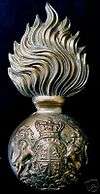Seth Rich was born at the beginning of 1890 in Whittington Chesterfield. He was the second son of John Thomas Rich and Isabella Smith. He was baptized on 1st November 1891 at Whittington Parish Church.

John and Isabella married on May 16th 1887 at Newbold Parish Church. Their eldest son John Willie Rich was born in 1888 and Seth was born two years later.
According to the 1891 census the family were living at 57 Johnson Street Whittington. Johnson Street was ‘on The Brushes’ as you can see from the map below.


In August 1900 Seths mother Isabella was called to give evidence as a witness into the case of a lady who fell downstairs and later died from her injuries.
Transcript of the report in the Derbyshire Times Saturday August 18 1900.
‘FATAL FALL DOWNSTAIRS AT NEWBOLD MOOR’
Mr C G Busby JP Coroner for the Hundreth of Scarsdale held an inquest at The Prince Of Wales Inn, Newbold Moor on Tuesday following the death of Emma Gouldthorpe (69) a widow of Albert St Newbold Moor who died on Monday from the effects of a fall on July 30th. Isabella Rich, wife of John Thomas Rich an Ironworker of Sheepbridge, said about half past nine on the night of July 30th she was in the house of John Edward Woodward, where deceased was housekeeper, when deceased lit a candle and went upstairs. Deceased was very feeble and witness told her to be careful and not fall. A few minutes afterwards witness heard deceased come falling downstairs. Some neighbours were fetched and Dr McClure. John Edward Woodward of Albert Street Newbold Moor, general labourer, said deceased had been his housekeeper for five years. She had been subject to “dizzy bouts”. When witness came home on the night of the accident deceased was on the sofa with her head bandaged up. A day or two afterwards she told the witness she caught her toe on a bit of carpet at the top of the stairs and fell to the bottom.
A verdict of ‘Accidental Death’ was returned.
This must have been quite an upsetting event for Isabella.
By 1901 John and Isabella had four children. John Willie and Seth had been joined by Walter 5 and Elsie 1 year old. John’s occupation was a Puddler. (A Puddler was a skilled worker who had learned his trade by hard work and observation. It was his job to turn Pig Iron into a more workable iron such as wrought iron. Unfortunately, the strenuous labour, heat and fumes caused Puddlers to have a short life expectancy, many dying in their 30s). As I cannot find a record of the date of Johns death, I don’t know whether he lived to old age.
The family were still living on Johnson Street but had moved to number 43. Possibly this may have been a bigger house as their family had now grown.
By 1911 Seths elder brother John had moved out of the family home and was lodging at 41 Carlisle Street, still The Brushes, in a lodging house run by Mrs Jane Mannion. He was now working as a miner (coal hewer).
The family are still living at 43 Johnson Street and as you can see from the 1911 census report Seth is now working as a bricklayer/labourer.

He has two more brothers by 1911, Frank born in 1906 and Luke born in 1908.
On 28th July 1913 Seths brother John married Rhoda Owen (a pottery girl) at Old Whittington Church.

As many of the WW1 Service records were damaged or lost as a result of enemy bombing in 1940 I am unable to confirm the date when Seth joined up. However, it is recorded that he enlisted in Hull and joined the 6th Battalion Royal Scots Fusiliers, Service Number 17940.

Cap Badge of Royal Scots Fusiliers.
Seth landed in France in October 1915. He would have been involved in heavy fighting as the 6th Battalion fought in the Battle of Albert (1st – 13th July 1916) and the Battle of Delville Wood (15th July-3 September 1916).
In April 1917 the Battalion were involved in The Battle of Arras. The 6/7th Battalion had now become part of the 15th Scottish Division. A full report of the Battle can be found here
Seth Rich died on 23rd April 1917 he was 27 years old.
This is an extract (taken from the above website) of the actions of 15th Scottish Division on the day Seth died.
At 4.45 a.m. on the 23rd April British troops attacked on a front of about nine miles from Croisilles to Gavrelle. At the same hour a minor operation was undertaken by us south-west of Lens.
On the main front of attack good progress was made at first at almost all points. By 10.0 a.m. the remainder of the high ground west of Cherisy had been captured by the attacking English brigades (30th and 50th Divisions), and Scottish troops (15th Division) had pushed through Guemappe.
East of Monchy-le-Preux British battalions (29th Division) gained the western slopes of the rising ground known as Infantry Hill. North of the Scarpe Highland Territorials (51st Division) were engaged in heavy fighting on the western outskirts of Roeux Wood and the chemical works.
On their left English county troops (37th Division) had reached the buildings west of Roeux Station and gained the line of their objectives on the western slopes of Greenland Hill, north of the railway.
On the left of our main attack the Royal Naval Division (63rd Division, Major-General C. E. Laurie) had made rapid progress against Gavrelle, and the whole of the village was already in their hands.
At midday and during the afternoon counter-attacks in great force developed all along the line, and were repeated by the enemy with the utmost determination, regardless of the heavy losses inflicted by our fire. Many of these counter-attacks were repulsed after severe fighting, but on our right our troops were ultimately compelled by weight of numbers to withdraw from the ridge west of Cherisy and from Guemappe.
North of the Scarpe fierce fighting continued for the possession of Roeux, the chemical works and the station to the north, but without producing any lasting change in the situation.
Not less than five separate counter-attacks were made by the enemy on this day against Gavrelle, and on the 24th April he thrice repeated his attempts. All these attacks were completely crushed by our artillery barrage and machine gun fire.
As soon as it was clear that the whole of our objectives for the 23rd April had not been gained, orders were issued to renew the advance at 6.0 p.m. In this attack Guemappe was retaken, but further south our troops were at once met by a counter-attack in force, and made no progress. Fighting of a more or less intermittent character continued in this area all night.
In the course of these operations of the 23rd and 24th April we captured a further 3,000 prisoners and a few guns. On the battlefield, which remained in our possession, great numbers of German dead testified to the costliness of the enemy’s obstinate defence.
Below is part of the Field report written by the Commanding Officer of the 6/7th Battalion Royal Scots Fusiliers confirming the heavy fighting that Seths Battalion was involved in between 19th April and 23rd April 1917.

Seth is commemorated on the Arras Memorial. Cemetery details can be found here
![124933018_1396093132[1]](https://oldwhittingtonopscom.files.wordpress.com/2018/05/124933018_13960931321.jpg?w=840)
At the entrance to the Faubourg d’Amiens Cemetery in France stands the Arras Memorial. The memorial commemorates nearly 35,000 soldiers of the British, South African and New Zealand forces with no known grave. Most of those commemorated were killed in the Battle of Arras, fought between 9 April and 16 May 1917.
He is also listed on the Scottish National War Memorial Roll of Honour – http://www.snwm.org/roll-search/
As Seths Medal Card below shows he was awarded the 1914-1915 Star, The Victory Medal and the British War Medal.

Seth Rich is commemorated on Old Whittington and The Brushes War Memorial.
